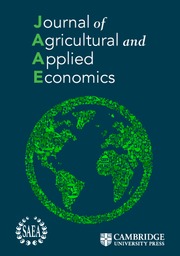No CrossRef data available.
Article contents
Optimal Dynamic Management of Agricultural Land-Uses: AnApplication of Regime Switching
Published online by Cambridge University Press: 26 January 2015
Abstract
The capacity of global agricultural production to meet increased demand forfood from population growth and wealth accumulation is threatened byextensive land degradation. Nonetheless, previous research has focusedprimarily on the dynamic implications of input management and ignoredland-use choice. This paper extends this theory through an examination ofthe intertemporal management of agricultural land through the use ofnon-crop inputs, such as fertilizer, and land uses that either degrade orrestore productivity. The need to consider the relative total asset value ofalternative crops over time is demonstrated. Moreover, higher output pricesfor degrading crops are shown to increase their relative value, motivatingthe later adoption of substitutes. An inability of land markets to reflectdifferences in resource quality and low capital malleability promote greaterdegradation. However, substitution of complementary effects through inputuse may help to sustain productivity. These factors are discussed in thecontext of crop sequence management in Western Australian croppingsystems.
Information
- Type
- Research Article
- Information
- Copyright
- Copyright © Southern Agricultural Economics Association 2011

